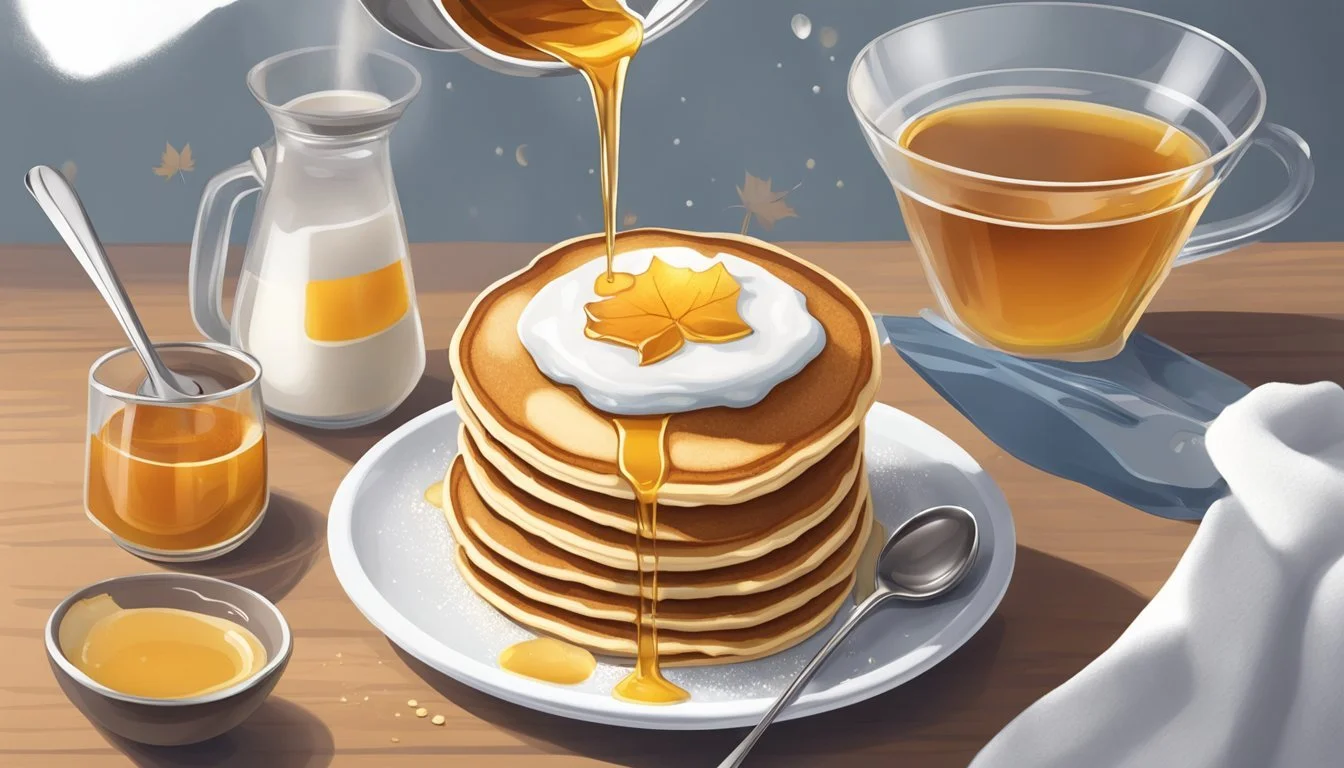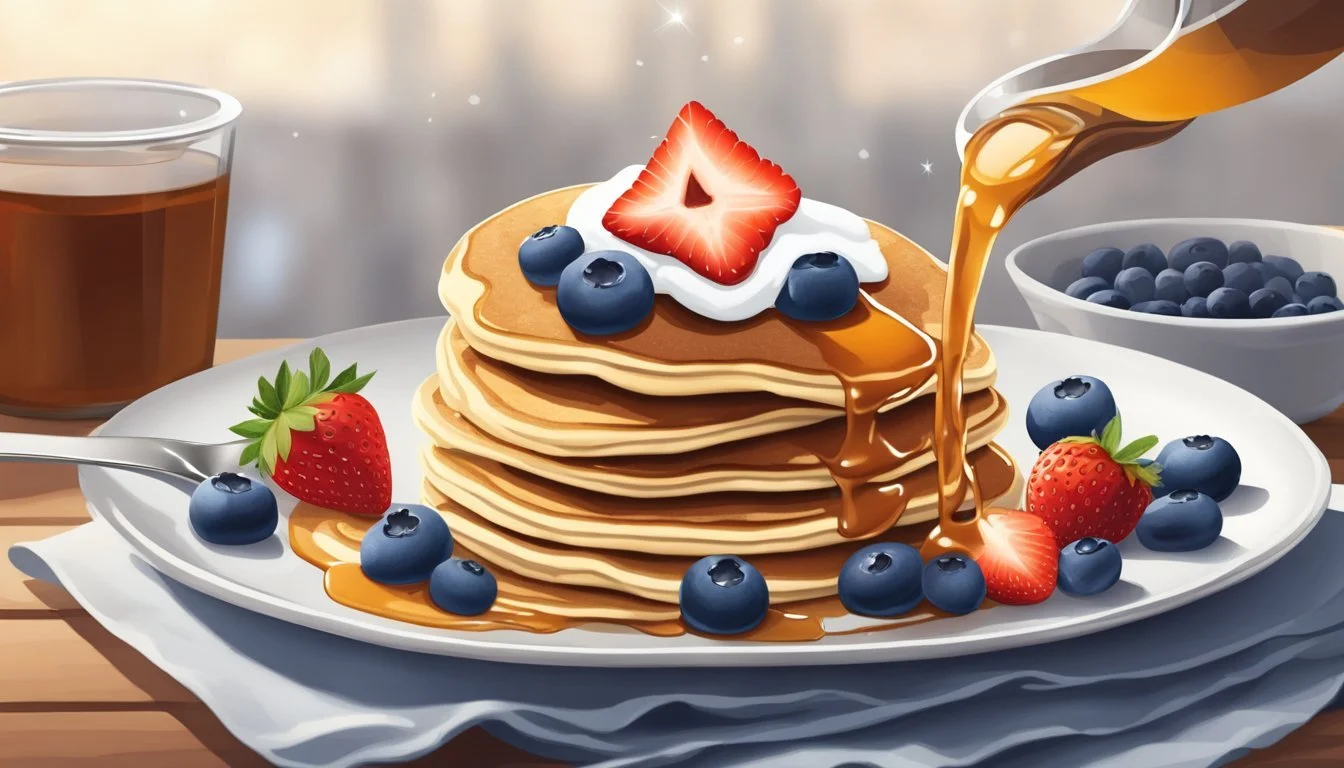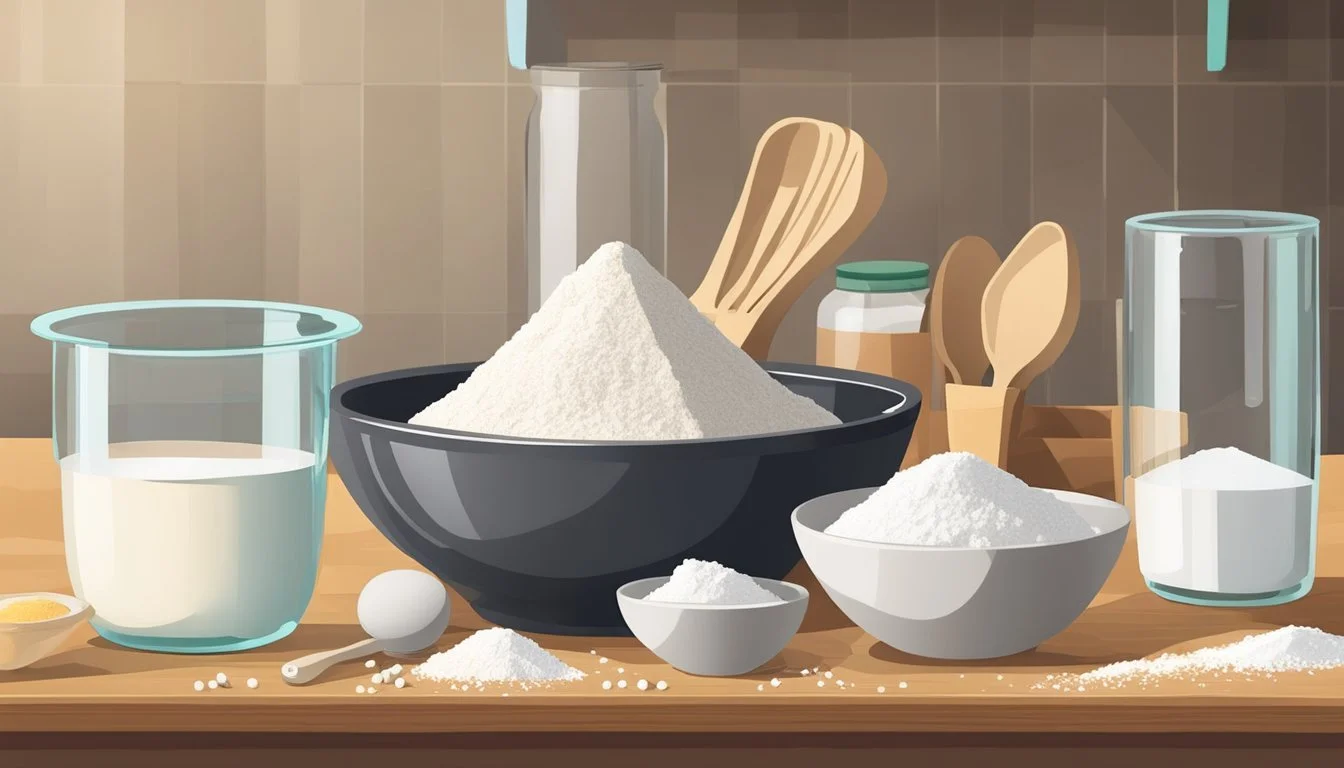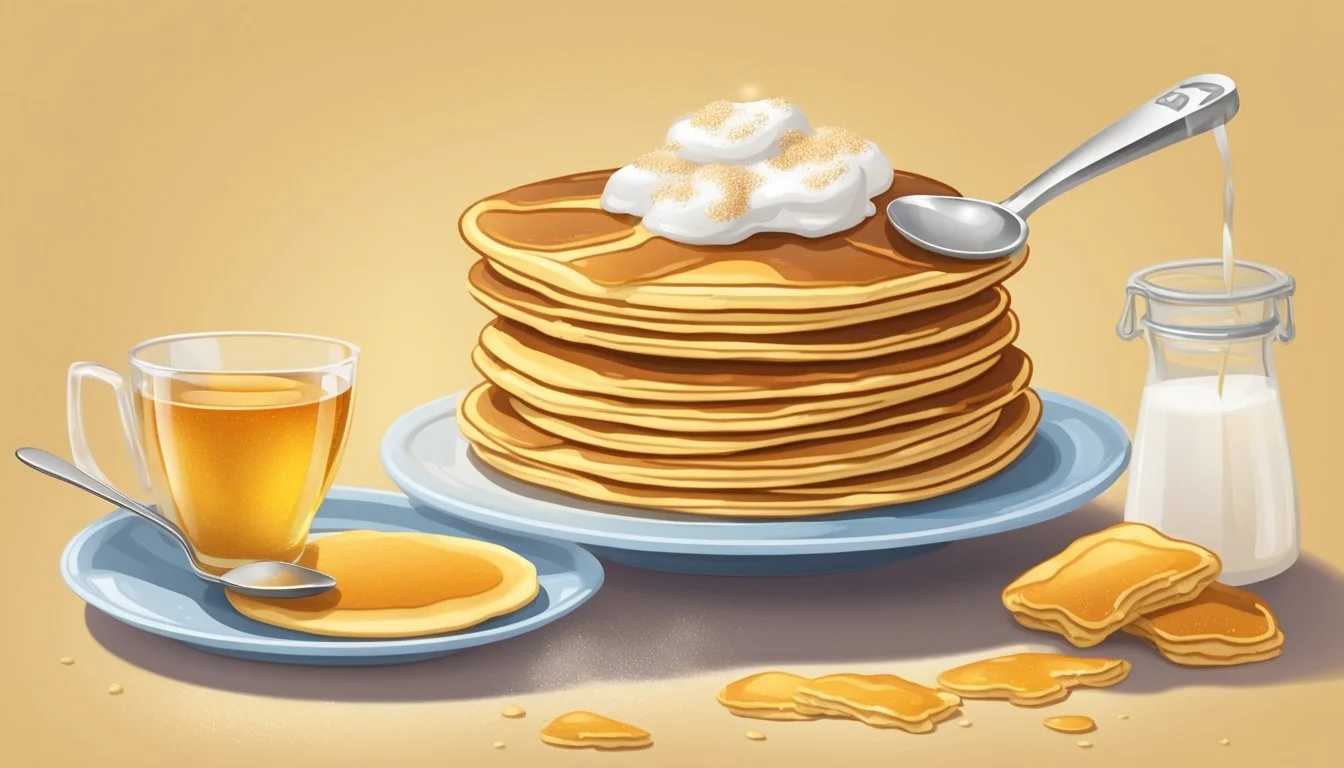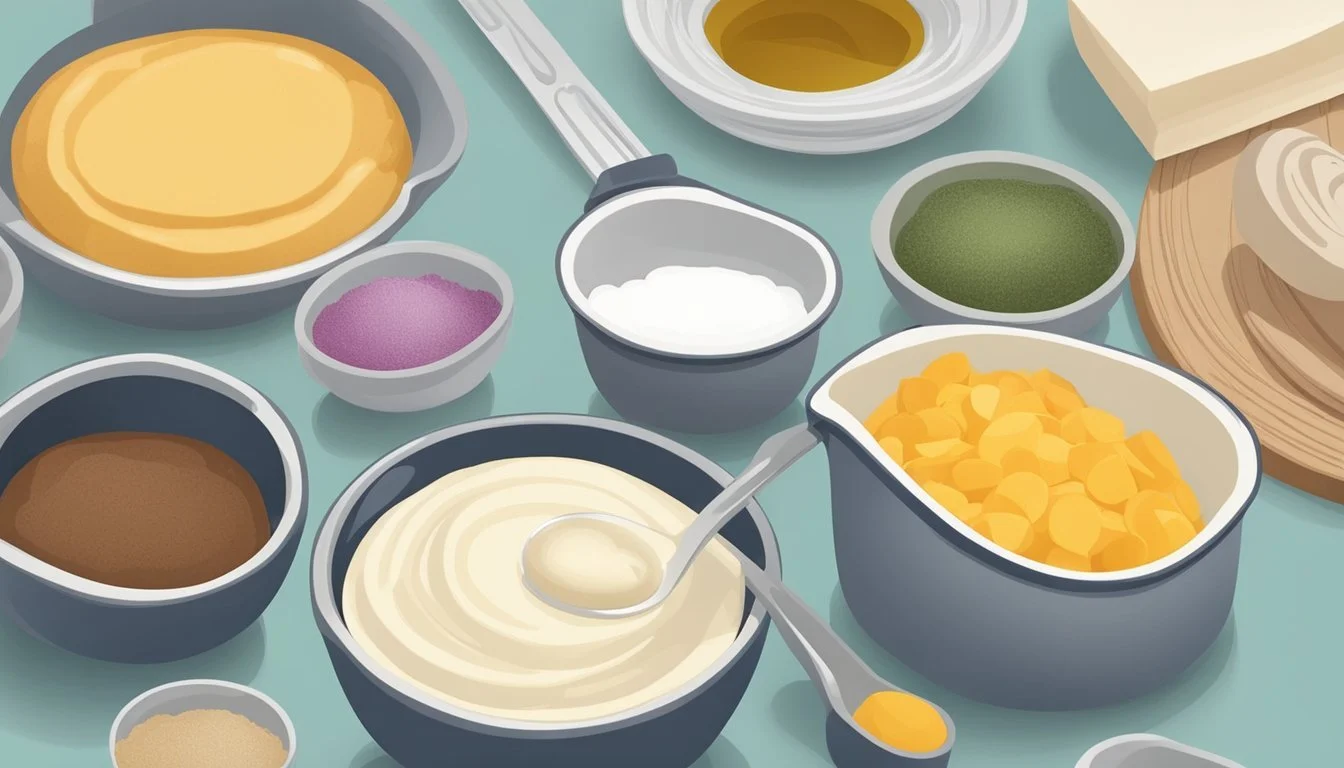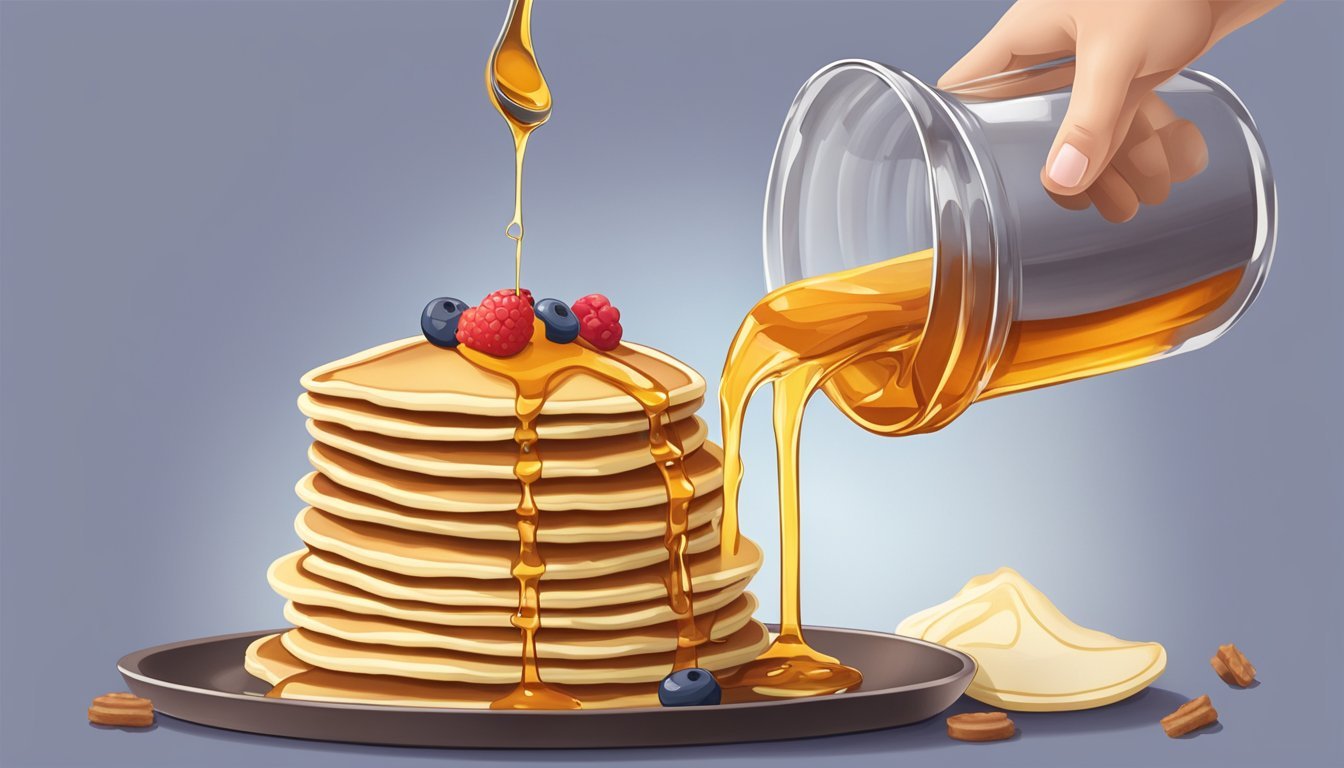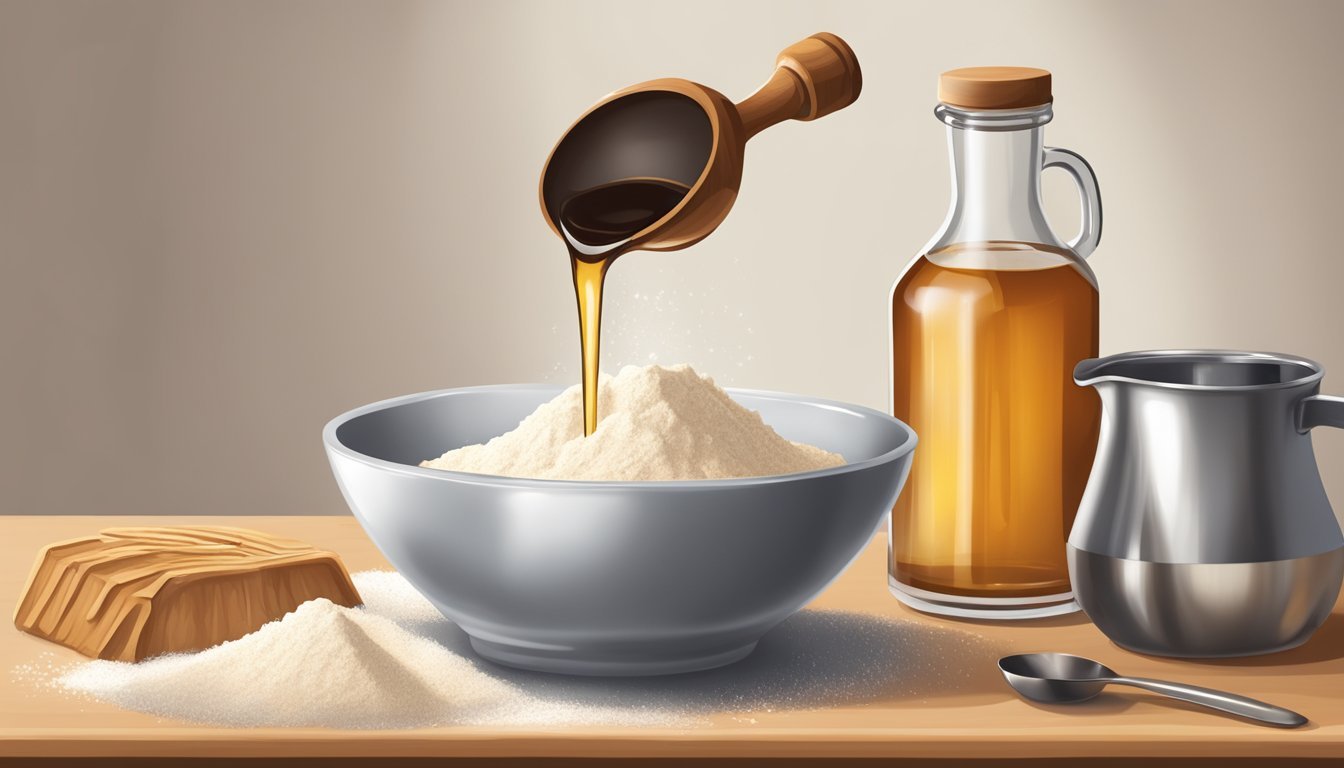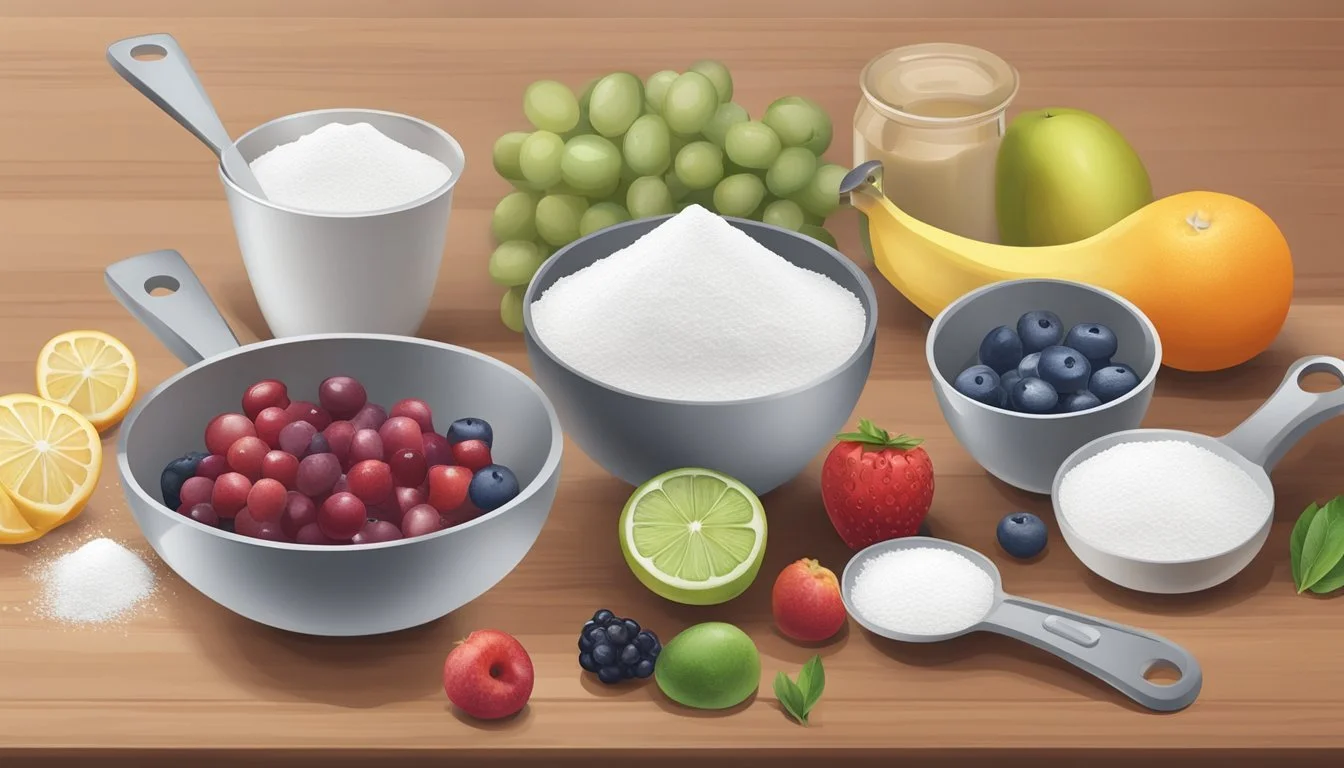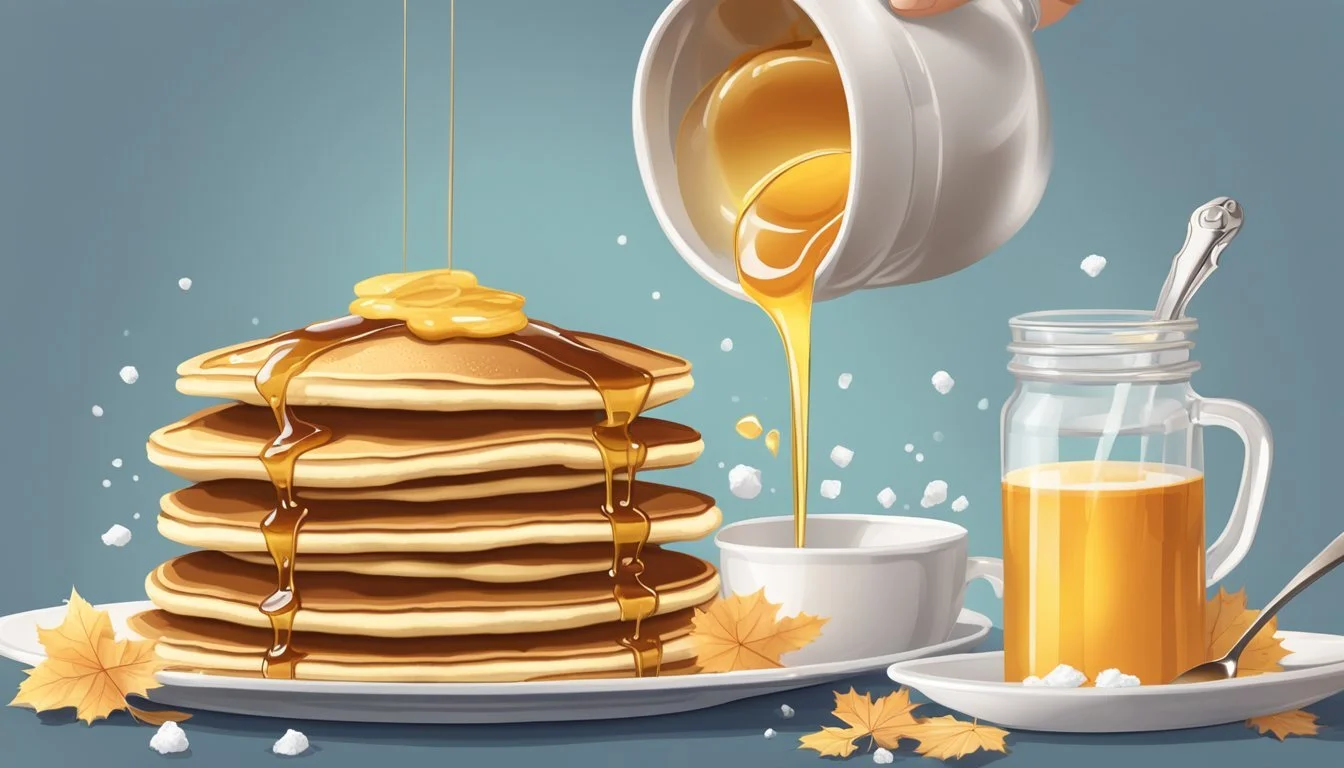How to Measure Ingredients for a Homemade Pancake Topping
Accurate Portioning Guide
Measuring ingredients accurately is a fundamental step in creating delectable homemade pancake toppings. Precision in measurement ensures that flavors are balanced and the texture of the topping is perfect, which can take a simple pancake from good to extraordinary. When it comes to homemade toppings, whether one is aiming for a rich chocolate sauce, a zesty fruit compote, or a classic syrup, understanding the basics of measuring various ingredients is essential.
For liquids like chocolate syrup or fresh fruit purees, using measuring cups designed for liquids yields the best results. These cups typically have a spout and measurements marked in both milliliters and fluid ounces, allowing for accurate and spill-free pouring. Dry ingredients like sugar for a syrup or chocolate chips for a ganache should be measured using cups with a flat rim. This lets the cook level off the measuring cup with a straight edge for precision.
Measuring small amounts of ingredients, such as the lemon zest for enhancing fruit syrups, requires teaspoons or tablespoons. These utensils provide the granularity needed to season toppings without overpowering the main components. When preparing a homemade topping, each ingredient's specific quantity materially affects the end product, influencing texture, sweetness, and overall flavor profile. Consequently, careful measurement is not just a suggestion; it's a necessity for high-quality homemade pancake toppings.
Understanding Pancake Toppings
When preparing pancake toppings, the selection and measurement of quality ingredients can transform simple pancakes into a delightful meal. Here, we delve into the critical elements that impact the taste and presentation of pancake toppings.
Importance of Quality Ingredients
Quality ingredients are the cornerstone of delectable pancake toppings. High-caliber components such as pure maple syrup, fresh fruit, and artisan chocolates serve not only to enhance flavor but also to ensure a pleasurable texture and appearance. For instance, ripe, seasonal fruit typically provides a natural sweetness and a vibrant burst of color, while homemade jams and nut butters, free from preservatives, deliver a robust and unadulterated taste.
Varieties of Pancake Toppings
The variety of pancake toppings is vast and caters to all preferences, whether sweet or savory. Here is a brief overview of popular topping categories:
Sweet Toppings: These include maple syrup, honey, chocolate syrups, chocolate chips, and powdered sugar. Sweet toppings cater to those who enjoy a classic, dessert-like pancake experience.
Fruit-Based Toppings: Options range from fresh fruits like strawberries and blueberries to fruit compotes and jams. They offer a balance of sweetness and acidity, which complements the pancake's taste.
Luxurious Additions: Gourmet choices such as mascarpone, ricotta cheese, or a dollop of flavored butter add a rich and creamy texture to pancakes.
Savory Elements: For those who prefer a non-sweet topping, sliced avocados, cheese cubes, or a fried egg can transform pancakes into a hearty meal.
By mastering the proper selection and measurement of these ingredients, one can create an array of succulent toppings to suit any pancake dish.
Ingredients Measurement Techniques
Accuracy is crucial in baking to ensure the desired texture and consistency, especially for toppings that complement fluffy pancakes. The following subsections provide techniques to measure ingredients precisely, utilizing the appropriate equipment for dry and wet components.
Measuring Dry Ingredients
To measure dry ingredients like all-purpose flour, sugar, salt, baking powder, and baking soda, the cook should use dry measuring cups. The ingredient is spooned into the cup and leveled off with a straight edge, such as the back of a knife, to ensure accuracy. This method helps avoid packing down ingredients (except when measuring ingredients like brown sugar, which are meant to be packed).
All-purpose flour, baking powder, baking soda: Spoon into the measuring cup and level off.
Sugar: Pour into the measuring cup and shake lightly to settle. Level off.
Salt: Spoon into a measuring spoon and level off.
Measuring Wet Ingredients
Wet ingredients such as milk, water, or liquid flavorings require a different approach. Utilize clear liquid measuring cups and pour the ingredient up to the corresponding mark to obtain the correct volume. For accuracy, the cook should check the measurement at eye level.
Milk, water, liquid flavorings: Pour into liquid measuring cup; check at eye level.
Measuring Small Quantities
When measuring small quantities, accuracy is essential. A set of measuring spoons is the best tool for this task. The cook may encounter ingredients which require careful measuring to maintain the balance of flavors or chemical reactions such as in leavening.
Baking powder, baking soda, salt: Use measuring spoons; level off with a straight edge.
Vanilla extract or other liquid ingredients: Fill the measuring spoon to the brim.
Using these techniques ensures that the cook measures ingredients for homemade pancake toppings accurately, maintaining the integrity and intended result of the recipe.
Prepping and Cooking Pancakes
Preparing pancakes involves achieving the perfect batter consistency and ensuring your pancakes are cooked evenly to a golden brown. Mastery in mixing and cooking is key to delicious results.
Mixing Batter to Right Consistency
The batter should be mixed until just combined; over-mixing can lead to dense pancakes. A user would start with their dry ingredients, typically including flour, baking powder, and baking soda, which are sifted together to introduce air for fluffy pancakes. The wet ingredients, often a large egg, melted butter, and buttermilk for buttermilk pancakes, should be whisked together in a separate bowl. Then, the wet ingredients are gently folded into the dry mix. The batter ought to be slightly lumpy, with the consistency thick enough to slowly pour off a spoon.
Wet Ingredients:
1 large egg
Melted butter (as required by recipe)
Buttermilk (adjust for buttermilk pancakes)
Dry Ingredients:
All-purpose flour
Baking powder (approx. 1 teaspoon)
Baking soda (if using buttermilk)
Cooking Pancakes to Perfection
The cooking surface, whether skillet, griddle, or oven-safe pan, must be preheated to a moderate temperature. It should be hot enough that a droplet of water sizzles upon contact. When ready, lightly grease it with butter; too much can make the edges fry.
A user then pours a 1/4 cup of pancake batter for each pancake. Once the surface starts bubbling and the edges firm up, it’s time to flip. A properly heated pan will create a golden brown surface after 2-3 minutes. The user should flip only once to maintain fluffiness. The second side cooks quicker; it often requires just a minute or two until done. An oven can be used to keep cooked pancakes warm while others are prepared.
Cooking Steps:
Preheat cooking surface and lightly grease with butter.
Pour 1/4 cup of pancake batter per pancake on surface.
Look for bubbles and firm edges as a sign to flip.
After flipping, cook until golden brown.
Topping Recipes and Ideas
Creating the perfect topping for homemade pancakes elevates the dish from good to great. This section provides specific recipes and ideas for various types of toppings, focusing on measuring ingredients accurately to ensure the best flavor.
Sweet and Syrupy Toppings
Maple Syrup: A classic topping for pancakes, pure maple syrup should be measured in tablespoons, usually 2-3 per serving.
Butter and Maple Syrup: Combine 2 tablespoons of softened butter with 3 tablespoons of maple syrup for a rich, creamy drizzle.
Caramel: To make a caramel topping, melt 1 cup of sugar until amber-brown, then carefully mix in ½ cup of heavy cream and a pinch of salt. Drizzle over pancakes for a sweet finish.
Honey: Measure out 2-3 tablespoons of honey to drizzle over each pancake stack for a naturally sweet touch. Enhance by stirring in a ¼ teaspoon of vanilla extract for added flavor.
Chocolate Syrup: For chocolate lovers, mix ¼ cup of cocoa powder with ½ cup of water, 1 cup of sugar, and a pinch of salt, cooking until smooth for a homemade chocolate syrup.
Fruit-Based Toppings
Blueberries: Fresh blueberries can be used as is or simmered with a tablespoon of sugar and a teaspoon of lemon juice to create a syrupy fruit topping.
Raspberries and Strawberries: Gently heat a mix of raspberries and diced strawberries with a sprinkle of sugar until they release their juices, forming a fresh berry compote.
Nut and Chocolate Variations
Nuts: Toast a variety of nuts such as almonds, walnuts, or pecans in a dry pan; roughly chop and sprinkle over pancakes. Measure ¼ cup per pancake stack for a crunchy texture.
Chocolate Chips: Sprinkle ⅓ cup of chocolate chips on top of the pancake batter just before flipping for melted chocolate in every bite.
Peanut Butter: Warm 2 tablespoons of peanut butter until pourable, and drizzle over the pancakes for a nutty flavor enhancement.
Savory Topping Options
Bacon or Sausage: Complement pancakes with crispy bacon strips or cooked and crumbled sausage. Measure roughly two bacon strips or ¼ cup sausage per serving.
Eggs: Top pancakes with a fried or scrambled egg. For precision, crack a single egg per pancake set for a protein-packed option.
Cheese: Grate and sprinkle a light layer of cheese such as cheddar or mozzarella, about ¼ cup per serving, over pancakes for a savory twist.
Serving and Presentation
When serving homemade pancake toppings, the quantity provided and the visual appeal are critical. One must adeptly balance flavor pairings and striking presentation to enhance the overall pancake experience.
Approaches to Plating
In plating, servings should be measured to complement the size and number of pancakes prepared. For a visually pleasing presentation, chefs often recommend drizzling strawberry sauce or syrups in a zigzag pattern or circling the plate’s edge. Layering fresh fruits like blackberries, blueberries, or complementing ice cream or whipped cream on top of the pancakes adds texture and color, turning a simple dish into an eye-catching creation.
Individual Servings: Propose 2 tablespoons of sauce or fresh fruit per pancake.
Family-style: Offer toppings in separate bowls, allowing diners to add to their preference.
Accompaniments and Pairings
Tailoring the toppings to the pancake type elevates the dining experience. Blueberry pancakes pair excellently with fresh blueberries and a dollop of whipped cream, while a warm strawberry sauce can enhance the sweetness of plain pancakes. For a twist, infuse butters with citrus zest or spices that complement the chosen fruits. Similarly, different jams and pancake syrups should be selected based on the pancake recipe—maple syrup is a classic, while fruit-based syrups can tie in the accompanying fruit flavors. Here's an example of thoughtful pairing:
Pancake Type Suggested Toppings Syrup Choice Classic Buttermilk Ice Cream, Blackberries Maple Syrup Blueberry Pancakes Blueberries, Whipped Cream Blueberry Syrup
Maintaining a confident and knowledgeable approach to the presentation reinforces the quality of homemade pancake toppings. As they serve, the hosts should illustrate how perfect toppings not only complement the flavors but also turn a meal into an artistic display.
Nutritional Considerations
When preparing homemade pancake toppings, one must consider the nutritional impact of each ingredient to maintain a healthy diet. The caloric content and nutrient density are essential factors.
Calories: Homemade toppings can vary greatly in caloric content. For instance, honey is a natural sweetener but is high in calories. Users should measure it sparingly, using perhaps a teaspoon (21 calories) per pancake.
Healthy Options:
Fresh Fruit: Adding fresh fruit such as berries or sliced bananas contributes vitamins and fiber with minimal calories.
Fruit Sauce: Creating sauces from pureed fruit can offer the sweetness with added nutritional benefits, avoiding the excessive sugar found in store-bought varieties.
Granola: A sprinkle of granola can add a satisfying crunch and fiber, but one should check for added sugars.
Dietary Restrictions: It's crucial to consider dietary restrictions. Gluten-free diets may avoid granola unless it's certified gluten-free, while diabetics may need to limit honey and fruit sauce.
Ingredient Serving Size Calories Notes Honey 1 tsp 21 Natural sweetener, use in moderation Fresh Fruit 1/2 cup 30-50 High in fiber and vitamins Granola 1/4 cup 140 Watch for added sugars Fruit Sauce 2 tbsp 20-30 Avoid adding extra sugar
Fiber and other nutrients can contribute to feeling satiated while also ensuring that one's topping choices support overall health goals. These are just a few ways to balance enjoyment and health when measuring ingredients for pancake toppings.
Storage and Reheating Advice
When preparing a homemade pancake topping, proper storage is crucial to maintain its freshness and flavor. For basic toppings like fruit compotes or syrups, refrigeration is recommended. One should transfer the topping into an airtight container, as it will help preserve the moisture and prevent contamination. Typically, these toppings can be stored in the refrigerator for up to one week.
For reheating, the method will largely depend on the consistency and ingredients of the topping. A microwave can be a quick and effective tool for warming up syrup-based toppings. Here is a simple guide to safely reheat your toppings using a microwave:
Place the desired amount of topping in a microwave-safe dish.
Heat on a low to medium setting, in 15-second intervals, stirring in between to ensure even heating.
Check the texture frequently to make sure it doesn't become too runny or lose its intended consistency.
Alternatively, toppings can be gently reheated on the stove. Use a small saucepan over low heat and stir continuously until the desired temperature is reached. This method is essential for toppings that need to be warmed slowly to retain their texture and flavors, such as fruit reductions or chocolate ganache.
For leftovers that have been refrigerated, it’s recommended to bring the topping to room temperature before reheating. This will ensure a more even distribution of heat, preventing the edges from getting too hot while the center remains cold.
In summary, careful storage and reheating are key to enjoying your pancake toppings to the fullest. By following these steps, one can ensure their homemade topping remains delicious and safe to consume.
Tips and Tricks for Best Results
When measuring ingredients for a homemade pancake topping, precision and methodical approach ensure the fluffy texture and rich flavor expected from high-quality pancake recipes. Below are some measured instructions:
Fluffy Syrups: To achieve a light syrup, measure sugar and water using a ratio of 1:1. Before applying heat, they should dissolve together slowly to maintain the desired consistency.
Texture in Toppings: For textured toppings like cinnamon and sugar, a consistent ratio is key—typically 1/4 cup of sugar to 1 tablespoon of cinnamon. Mix thoroughly to avoid clumping.
Balanced Flavor: When creating flavored syrups, start with a base of simple syrup and then add small quantities of flavor extracts, tasting periodically. This ensures a balance between sweetness and flavor.
Sheet Pan Pancakes: For uniformity in toppings on sheet pan pancakes, use a measuring cup to evenly distribute syrups or spreads over the batter before baking.
Whipped Toppings: To achieve optimal fluffiness in whipped cream, chilling the bowl and whisk beforehand can make a significant difference. Measure heavy cream by volume and add powdered sugar to taste.
Peanut Butter: Measure peanut butter by volume for accurate flavor. Warm it slightly to make it easier to spread evenly over pancakes without tearing them.
Topping Measurement Instruction Syrup 1:1 sugar Dissolve before heating Cinnamon Sugar 1/4 cup to 1 tbsp Mix to avoid clumps Whipped Cream To taste Chill utensils; add sugar after volume measurement Peanut Butter Volume Warm for spreadability
Following these precise methods will result in delectable toppings that complement the underlying pancake, providing a satisfying texture and flavor experience.
Frequently Asked Questions
What equipment is needed to measure ingredients for a pancake topping?
A person will require measuring cups and spoons, a kitchen scale for precise measurements, and mixing bowls.
How does one accurately measure liquid ingredients for a topping?
They should use a clear measuring cup for liquids and check the measurement at eye level on a flat surface.
Can the pancake topping recipe be adjusted for serving size?
Yes, it is scalable. To adjust, they change the quantity of ingredients proportionally based on the number of servings needed.
What are common ingredients in a homemade pancake topping?
Typical ingredients include:
Fruits: strawberries, blueberries, bananas
Sweeteners: maple syrup, honey, powdered sugar
Extras: chocolate chips, nuts, whipped cream
Is there a substitute for maple syrup in pancake toppings?
Certainly, they can use honey, agave nectar, or a simple sugar syrup as substitutes.
How should ingredients be stored prior to making the topping?
Most ingredients should be stored in a cool, dry place, while perishables like fruits should be refrigerated.
What is the key to a successful homemade pancake topping?
They should ensure ingredients are fresh and measurements precise. Stirring the topping gently will preserve textures.
Conclusion
In the culinary adventure of creating homemade pancake toppings, accuracy in measuring ingredients is a key component. A well-measured combination ensures the intended flavor balance and texture that elevates the pancake experience.
The proper use of tools, like measuring cups, spoons, and kitchen scales, facilitates consistency. For liquids, one should use liquid measuring cups to achieve precision. Ingredients like sugar or lemon juice for syrups are best weighed or measured with dry measuring cups.
One must remember that ingredients such as whipping cream for richer toppings require attention to volume as it transforms from liquid to fluffy peaks through whipping. Similarly, fruits, whether strawberries or bananas, should be diced uniformly for even cooking and blending in sauces.
They are encouraged to experiment with different quantities to suit personal preferences, but maintaining the foundation of accurate measurement will ensure reliable results. With practice, one becomes adept, allowing for more creativity and innovation in pancake toppings.
In summary, accuracy in measurement is not just about following a recipe—it's an expression of craftsmanship and attention to detail that results in exceptional homemade toppings. They are equipped with the knowledge and skills to create delicious toppings that complement their pancake creations perfectly.

